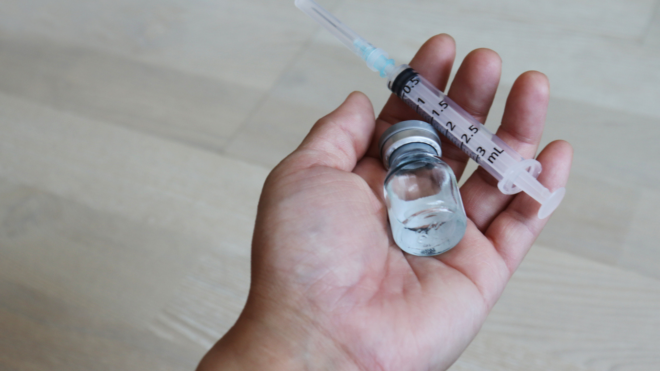Ever since I got my first period while shoveling snow off of a neighbor's driveway, I knew things just weren't right. They were downright dysfunctional. It quickly became evident that my period came with pitfalls and challenges that the other girls didn't face.
I was one of those teenagers who moaned and cried on the bathroom floor from cramps all night long, usually bringing myself to throw up to ease the pain.
At 14, I was in emergency rooms while doctors probed me with ultrasound wands, convinced they'd find a cyst or a fibroid. They examined me top to bottom. Let me tell you how fun it is to have your childhood pediatrician explore your rectum in front of your mom on a Tuesday afternoon.
Still, no answers laid waiting within that rectum — or anywhere else for that matter. Doctors told my parents a range of things, from "your daughter has an exceptionally low tolerance for pain" to "she has a very narrow pelvis, and perhaps, as she grows, the pain will lessen."
My parents transitioned slowly from, "Why are you so dramatic over period cramps?" to "OK then, take your Advil," to "fine, I'll write you another late pass," to a helpless silence at my ongoing condition. My mom would stand outside the door to the bathroom, gently knocking.
"Can I get you anything?"
I'd groan, and she'd wince and walk away.
It became apparent that this wasn't just period cramps.
This pain was similar to contractions during childbirth. Clearly, my uterus had been trying to expel something monthly for years.
My friends were equally baffled. When they had cramps, they took an Advil. Case closed. They wouldn't vomit, miss practice, or arrive late to school. When I explained my plight, I'd receive an awkward, strained silence.
Naturally, my male pediatrician, an ancient man, whose back curved like the letter "c," was no help, so he sent me to a gynecologist, a bubbly, happy-go-lucky, glass-half-full woman who insisted that nothing was wrong. Nothing. My cramps were "normal." There was no examination, no consultation with her colleagues, nothing. She gave me a tissue for my tears and quickly took out her script pad, wrote out an order for birth control pills, and sent me on my way. At 14. With birth control pills. She explained that the hormones in the pills would counterbalance the cramping.
And while the pills helped, I still spent at least four to five days before my period each month from my teens into my 20s, barreled over in the fetal position in wrenching pain, waiting out the 20 minutes it took for the Advil to kick in.
At the same time, I thrashed on the floor of the closest bathroom like a dying eel. This pattern continued for what felt like centuries. I just accepted that this was my 'normal.' I never questioned it. I became uncomfortably intimate with the floor tiles of my bathroom, counting each one as I writhed.
As I grew older, the four to five days of pain turned into an average of 10 to 12. An intravenous drip of Advil couldn't have done the job.
It wasn't until I was 29 and reeling from a second-trimester pregnancy loss that a doctor found my endometriosis.
A notoriously painful disorder, endometriosis occurs when tissue similar to the uterine lining grows outside of the uterus. Because normal endometrium is released each month, shed with the start of your period, the tissue implanted elsewhere becomes trapped, forming lesions on your surrounding organs and causing contraction-like cramps as your body unsuccessfully tries to release them.
Endometriosis.org estimates that 176 million females of childbearing age have endometriosis globally. The disorder can wreak havoc on fertility, the immune system, and mental and social health. Studies have also shown a link between endometriosis and ovarian cancer.
Because doctors have notoriously “normalized” period cramps, endometriosis can go undiagnosed for years before it's detected and treated.
By this time, not only has a woman suffered immensely in silence, but the disorder has had sufficient time to decrease her fertility chances and cause other physical consequences. Many doctors then recommend that a woman get pregnant, known to be the only way to slow the disease's progression. Still, due to the devastating effects on fertility, women find this increasingly harder to achieve. Teenagers don't have this option and instead receive scripts for birth control, as I was, at a tender age, to keep their symptoms at bay. While particular drugs can treat endometriosis, long-term use is discouraged due to adverse side effects.
Today, many teenagers and young women across the US have this chronic condition.
They're confused, falsely led to believe that what they're experiencing is an average side effect of menstruation. Parents and doctors tell them they need to toughen up, take more medication and manage an undiagnosed, devastating illness with no medical guidance.
Instead, parents and doctors should be vigilant when monitoring the intensity and severity of a young woman's struggle with cramps.
What should be mild, manageable discomfort with their period should not evolve into contraction-like pain and suffering. Because it is progressive and chronic, endometriosis is a condition that can be corrected with surgery and then monitored throughout a young woman’s life. Like I did, too many young women suffer for entirely too long while doctors and parents can save them from years of pain and anguish.




